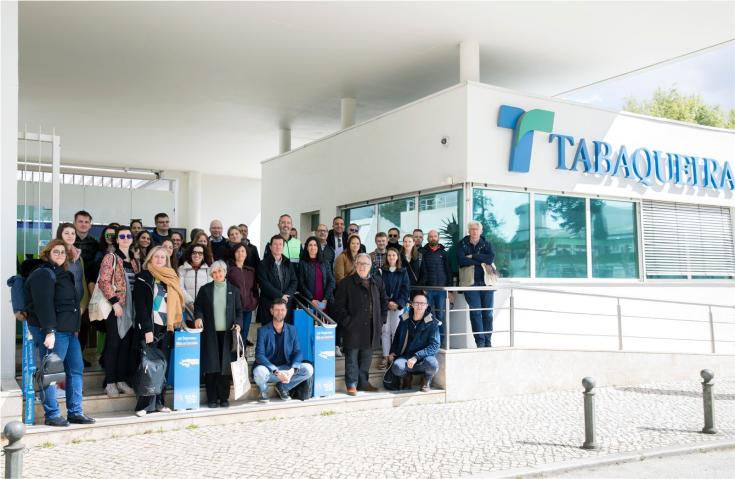Three days in Sintra with PROMOTER

The 1st study visit of PROMOTER took place between the 4th and the 6th of March in the Municipality of Sintra (Partner 7), situated in the Lisbon Metropolitan area.
Over the course of three days, PROMOTER project partners and stakeholders had the chance to visit and learn from Sintra’s best practices, which focus were on renewable energy communities, environmental sustainability, and sustainable mobility.
The event kicked off on March 4th with a presentation at Palácio Valenças, focusing on the Sintra Greening Plan as one of the selected good practices. This strategic initiative aims to establish a network of green spaces within the Municipality of Sintra, with the goal of promoting biodiversity in urban areas and improving, directly and indirectly, the quality of life for the population. The plan seeks to create ecological refuges for nature, reduce urban pollution (air, sound, and water), protect against flooding and drought, and contribute to re-establish the connection between humans and nature.
The Reaviva funding programme was then discussed, highlighting the investment the Municipality has been doing in supporting the improvement of buildings’ energy efficiency in the territory. Through Reaviva, the Municipality of Sintra aims to promote a management and intervention model in the territory that prioritizes urban regeneration and the revitalization of areas considered to be priorities, particularly with regard to the rehabilitation of the built-up area, in conjunction with the requalification of the public space. The ReaVIVA Sintra Regulation was implemented as a programme to subsidise works on properties in Urban Rehabilitation Areas (ARUs).
The day continued with a presentation on intermodal social mobility, which is focusing on the mobility change Lisbon metropolitan area has undertaken. The final good practice, I4efficiency, was presented with a technologic focus on how to address logistic in a more efficient approach.
On the second day, the focus shifted to on-site practices. The day started in TABLAB, in Bairro da Tabaqueira, Sintra, where participants observed best practices implemented by the SMILE project, particularly in circular economy, energy, mobility and community. A dedicated slot with local stakeholders and partners allowed for discussions on specific achievements and challenges.
In the afternoon, participants visited the Green Blue Axis, an ecological and soft mobility corridor along the River Jamor. This corridor spans over 16 km, from the river's source in the Serra da Carregueira to its estuary in Caxias, providing opportunities for walking and observing the project in action. The Green and Blue Axis embodies a vision of the territory supported by multifunctional corridors. These corridors serve as pathways for the circulation of water, nature, and people, both in their everyday life and leisure activities. The project allows a shift in mobility patterns creating sustainable conditions for people and environment.
The third and final day featured a workshop where participants had the opportunity to ask questions and evaluate the experiences gained during the visit. Discussions revolved around the potential replication and adaptation of the practices in participants' respective regions.